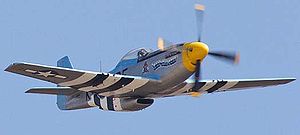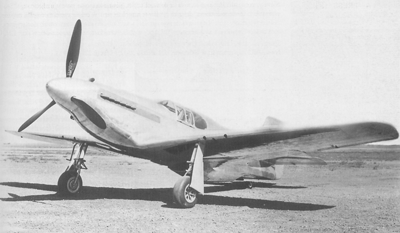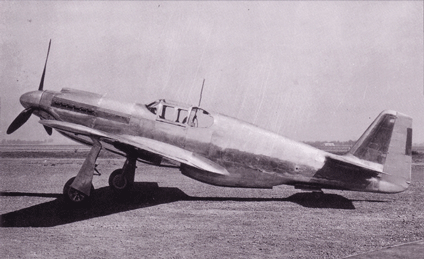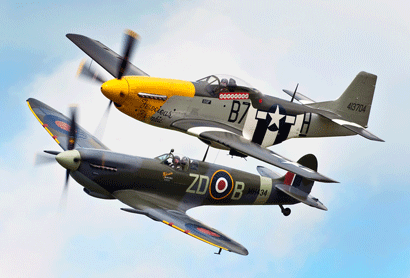P51 Mustang The all American hero, (not quite)

Sir Henry Self was responsible for Royal Air Force’s production and research and development. One of his jobs was to organize the manufacturing and supply of American fighter aircraft for the RAF.
The problem was, at the time none of the U.S. aircraft then in production could meet the British standard for fighter aircraft, only the Curtiss P-40 Tomahawk was somewhere near. But the P-40s were in short supply as the Curtiss-Wright plant was running at capacity.
About this time North American Aviation approached Sir Henry Self wanting to sell a new bomber, the B-25 Mitchell. Instead, they were asked if they would manufacture the Curtiss P-40 under license from Curtiss.
North American Aviation stated that they would prefer to manufacture their own aircraft based on the same Allison engine. The British stipulated the requirements for the new fighter and that the first aircraft should be delivered by January 1941. The Ministry of Aircraft Production placed an order for the new aircraft on the 24th April 1940 with North American Aviation.
The new aircraft designated NA-73X was designed by a German Edgar Schmued who was born in Hornbach, Germany, in 1899. He moved to the US in the early 1930’s and worked for the Fokker Aircraft Corporation of America, moving to North American Aviation in 1935.
The prototype NA-73X was finished in September 1940, just 102 days after the order had been placed; it first flew on 26 October 1940. It was armed with four .30 in Browning machine guns, two in the wings and two mounted under the engine and firing through the propeller.

The Mustang was fitted with the Allison engine which had a single stage supercharger. It was found that the power dropped off rapidly after 15,000ft. This made it unsuitable for escorting the USAAF bombers due to the altitudes they would by flying. The answer came from Rolls Royce, who suggested fitting a Merlin engine, the same engine fitted to the Spitfire. The Merlin 61 engine had a two speed two stage intercooled supercharger, designed by Stanley Hooker of Rolls Royce. This raised the horsepower from 1,200 to 1,620 and increased the top speed from 390 mph to 440mph as well as enabling the aircraft to operate at almost 42,000ft.

The production P-51 Mustangs were powered by a license-built Packard version of the Rolls-Royce Merlin 66 engine, and was armed with six .50 calibre Browning machine guns. It was an effective fighter and bomber escort aircraft, and when fitted with drop tanks, it could accompany the bombers on their missions to Germany and back.
So to sum up, the P-51 Mustang was specified and ordered by the British, designed by a German, powered by a British engine and built by the Americans. The Spitfire and the Mustang have more in common than you may think. The two most beautiful aircraft of WW2.

